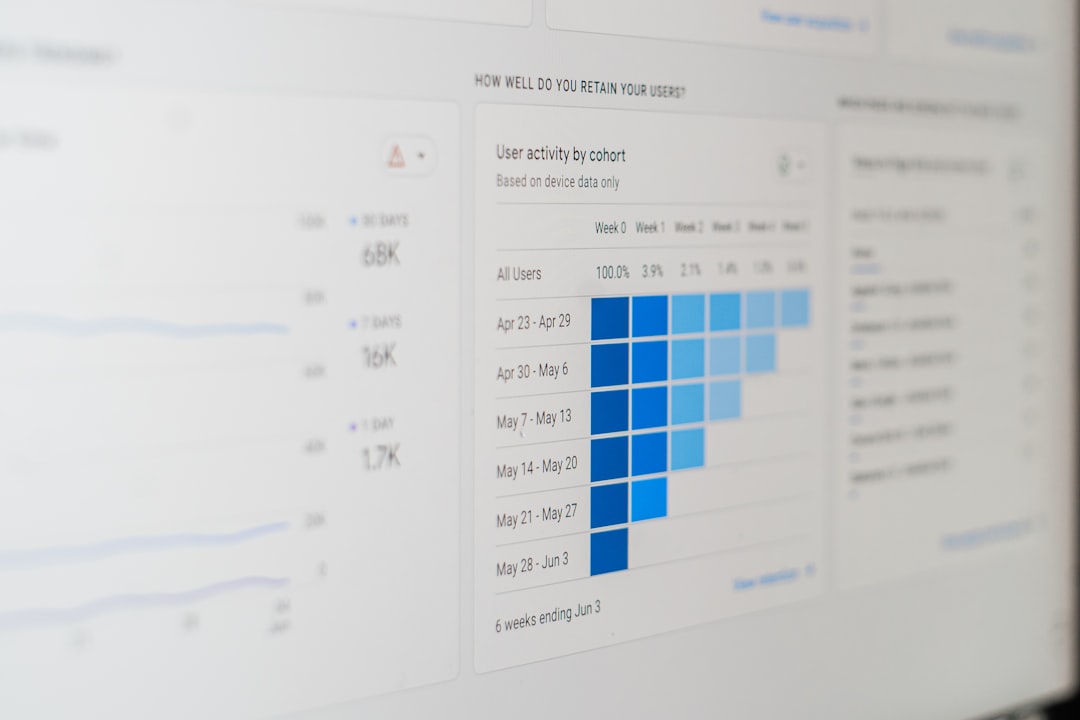In the evolving world of search engine optimization (SEO), where algorithms continue to move towards rewarding user intent and experience, first-party data is emerging as the secret weapon to achieve sustainable rankings in the Search Engine Results Pages (SERPs). As privacy regulations and user expectations reshape digital marketing, relying on third-party data is no longer sufficient—or even viable. Leveraging first-party data isn’t just a trend; it’s a necessity for maintaining online visibility and delivering personalized, high-quality content that Google loves.
- What Is First-Party Data?
- Why First-Party Data Matters for SEO
-
Methods to Use First-Party Data to Win SERPs
- 1. Optimize Content Based on On-Site Search Queries
- 2. Improve UX with Heatmaps and Click Tracking
- 3. Refine Landing Pages Using Behavioral Data
- 4. Leverage Email Engagement for Content Ideas
- 5. Segment Your Audience for Content Personalization
- 6. Integrate CRM Data with SEO Strategy
- 7. Encourage User-Generated Content and Reviews
- Real-World Examples of First-Party Data Success
- Data Privacy: A Crucial Side Note
- Tools to Collect First-Party Data for SEO
- Conclusion: Make It Personal, Make It Rank
What Is First-Party Data?
First-party data refers to the information that a company collects directly from its customers through owned platforms. This includes:
- Website behaviors (page views, time on site, click paths)
- Email engagement
- Account registrations
- Survey responses
- Purchase history
- Mobile app usage
Unlike second- or third-party data, first-party data is directly obtained, making it more accurate and reliable. It stems from actual user interactions with your brand, providing a goldmine of insights to tailor your SEO and content marketing strategies.
Why First-Party Data Matters for SEO
Google’s algorithms have advanced to measure not just keyword relevance but user satisfaction. Metrics such as bounce rate, dwell time, and page depth all tell a story about how users engage with your content. First-party data gives businesses a unique look into what *real* users are doing on-site, which means you can:
- Create better user experiences
- Develop high-performing, useful content
- Personalize on-page elements
- Optimize conversion paths
Additionally, given Google’s evolving updates—like the Helpful Content Update and E-E-A-T (Experience, Expertise, Authoritativeness, and Trustworthiness)—knowing what your audience wants and engaging them effectively is essential.

Methods to Use First-Party Data to Win SERPs
1. Optimize Content Based on On-Site Search Queries
Your internal search function is a silent champion of intent-driven user behavior. Scrutinizing internal search data reveals terms users are actively typing in while on your site, many of which may not be present in your current SEO strategy.
Action Step: Identify frequently searched keywords or phrases and create new landing pages or blog content targeting those queries. You’re not only serving your audience better but also positioning those pages to rank in external search environments.
2. Improve UX with Heatmaps and Click Tracking
Heatmaps, scroll maps, and click tracking tools (like Hotjar or Crazy Egg) offer a visual breakdown of user interactions. By understanding what grabs attention and what areas users ignore, you can make strategic decisions to improve conversions—and indirectly, SEO.
User behavior data helps optimize site architecture, CTA placement, and content hierarchies, all of which indirectly influence how search engines value your pages.
3. Refine Landing Pages Using Behavioral Data
Instead of A/B testing blindly, use session recordings and bounce rates to identify what’s working and what’s not on high-value landing pages. Elements such as form placement, content length, and interactive features can be tailored based on observed behavior.
Example: If users are frequently abandoning sign-up forms halfway, shorten them or break them into multiple steps to improve completion rates. Improved user flow can lead to better engagement metrics, which boost SEO signals.
4. Leverage Email Engagement for Content Ideas
First-party email data—such as open rates, click-through rates, and message interaction—provides valuable insight into your audience’s interests. If a specific topic garners a high click-through, it’s a strong indicator that the subject resonates with your readers.
Use this data to:
- Create or update blog posts focusing on popular subjects
- Improve meta descriptions and titles to mimic successful email headlines
- Build segmented content strategies based on different audience interests
5. Segment Your Audience for Content Personalization
Google prioritizes content that serves a specific intent. Using first-party data to segment users enables better targeting. You can create variations of content aligned with different journey stages, needs, and personas.
For example, a B2B software company might identify that decision-makers behave differently from researchers. Create two versions of a product page: one streamlined and benefit-oriented for executives, another with detailed technical specs for hands-on users.

6. Integrate CRM Data with SEO Strategy
Your CRM contains incredibly rich data—including demographics, sales cycle timelines, and past interactions. When this data informs your content strategy, you can produce content that resonates deeply with your buyers’ journey.
For instance, if CRM data shows customers typically ask about integrations before purchase, include detailed comparison content, integration use cases, or FAQ pages on your site to meet those concerns preemptively—and increase topical authority for search engines.
7. Encourage User-Generated Content and Reviews
Use purchase data to invite verified buyers to leave reviews, testimonials, or even case studies. These give your site fresh content and social proof. Google often rewards pages that receive regular updates and exhibit trust signals, and user-generated content does both.
Additionally, well-optimized review content can earn you star ratings in rich snippets, improving click-through rates in SERPs.
Real-World Examples of First-Party Data Success
Shopify
Shopify uses user behavior data from its massive customer base to create highly personalized blog content, product pages, and help documentation. This depth of relevance has allowed Shopify to dominate many transactional and informational keywords with targeted, helpful content.
HubSpot
Marketing powerhouse HubSpot integrates first-party data from its CRM, email responses, and blog analytics to continuously refine its content across various funnel stages. By analyzing which emails resonate best, they align blog content titles and search snippets with proven communication strategies.
Booking.com
Using first-party interaction data, Booking.com continuously tests changes to page layouts, headlines, and filters. This user-centric approach doesn’t just enhance conversions—it lowers bounce rates and boosts time on site, key behavioral signals that improve organic performance.
Data Privacy: A Crucial Side Note
With increased attention to data privacy and legislation such as GDPR and CCPA, it’s important to collect, store, and use first-party data ethically and transparently. Ensure you’re communicating what data is being collected and allow users to manage their privacy preferences. Google takes user trust seriously—and so should you.
Tools to Collect First-Party Data for SEO
To effectively capture and harness first-party data, consider these tools:
- Google Analytics 4 – Offers deep insights into user behavior, journey paths, and events.
- Hotjar – Provides heatmaps, user recordings, and sentiment surveys.
- Crazy Egg – Another great tool for visual user behavior insights.
- HubSpot – Integrates CRM data with email and content performance.
- Clarity by Microsoft – A free alternative offering detailed interaction data.
Conclusion: Make It Personal, Make It Rank
First-party data allows marketers to reverse-engineer what their audience truly wants. These insights rooted in real behavior—not assumptions—create a feedback loop where high-performing content leads to better engagement, stronger behavioral signals, and higher search rankings.
Google is increasingly rewarding relevance, expertise, and user experience. By embracing the full potential of first-party data, you’re not just reacting to the digital landscape—you’re helping to shape it. Data doesn’t lie, and when it’s your own, it’s even more powerful.
So make your SEO personal. Analyze your audience. Tailor your content. And win the SERPs with precision that no competitor can match—because only you have your first-party data.



Leave a Reply